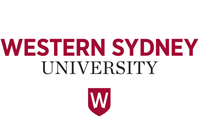Blue Mountains City
About the profile areas
The 2023 Estimated Resident Population for Blue Mountains City is 78,446, with a population density of 54.79 persons per square km.
Location and boundaries
Blue Mountains City is located at the western fringe of the Sydney metropolitan area about 55 to 95 kilometres from the Sydney GPO. Blue Mountains City is bounded by Hawkesbury City in the north, Penrith City in the east, Wollondilly Shire in the south and Lithgow City and the Oberon Council area in the west.
Traditional Owners
The City of Blue Mountains is located on the traditional lands of the Darug and Gundungurra Nations.
Name origin
The Blue Mountains are named for the distinctive blue haze surrounding the area, made by the oil bearing eucalyptus trees.
Important
|
Population78,446 2023 ABS ERP |
Land area1,432 square km |
Population density54.79 persons per square km |
Settlement history
Development in Blue Mountains City dates originally from 1813 when Blaxland, Wentworth and Lawson crossed the Blue Mountains, with the Bathurst Road built in the following year. A military depot was set up initially in Glenbrook, then moved to Springwood. During the 1830s settlement continued slowly. When gold was discovered in nearby Bathurst in the 1850s many people travelled through the Blue Mountains. Substantial settlement occurred when the Western Railway Line (from Penrith to Wentworth Falls) was opened in 1867. Springwood became the City's commercial centre. Katoomba was settled mainly from the 1880s, following the mining of coal and shale in the area. At the end of the 1880s, with the advent of the motor car, the Blue Mountains, especially the towns in the upper mountains, began to boom as a tourist destination, with many hotels and guesthouses built. In 1926 the Great Western Highway opened along the original rail route. The population of the Blue Mountains numbered about 20,000 in 1947. The City experienced significant growth in the post war era as employment growth in western Sydney encouraged the settlement of commuters, particularly in towns in the lower mountains. By 1966 the population had grown to about 30,000, and to about 38,000 by 1971. Rapid growth occurred during the 1970s and 1980s, with the population growing to about 48,000 by 1976, then 56,000 by 1981, then 64,000 by 1986 and to 69,000 by 1991. Much of this growth has been driven by an increase in occupancy as holiday houses have been converted into permanent occupancy. Since the 1990s the population growth has diminished, reaching nearly 72,000 by 1996 and over 73,000 by 2001. The population was relatively stable between 2001 and 2006, and then increased slightly to about 75,000 in 2011.
Land use
Blue Mountains City is a residential, resort and rural municipality. The City encompasses a total land area of 1,432 square kilometres, of which 74% is World Heritage National Park, renowned for its forests, rock formations, bushwalks, waterfalls and lookouts. A further 14% of the City is contained in public reserves. The majority of the remaining area is residential, with most towns and villages located along the ridgelines and plateaus on the main east-west road and rail corridor. Some are small, isolated rural settlements while others are large, urbanised areas. The major population centres are Katoomba and Springwood. The City's major industry is tourism, with many holiday homes and guest accommodation in the upper mountain towns such as Blackheath, Katoomba and Wentworth Falls, while the lower mountain towns such as Blaxland, Glenbrook, Springwood and Winmalee, are more suburban in character. The main industrial estates are located in Katoomba and Lawson. The primary rural area is the Megalong Valley.
Transport
Blue Mountains City is served by the Great Western Highway, Bells Line of Road, the Main Western railway line and the Katoomba Airfield.
Major features
- Major features of the City include the Blue Mountains National Park (with various mountains,
- creeks,
- waterfalls,
- lookouts,
- walking tracks and picnic areas),
- TAFE NSW Western Sydney Institute (Blue Mountains College),
- Norman Lindsay Gallery,
- Blue Mountains District ANZAC Memorial Hospital,
- Katoomba Shopping Centre,
- Yellomundee Regional Park,
- Katoomba Sports & Aquatic Centre and Katoomba Scenic Cableway,
- Railway & Skyway.
Included areas
- Blue Mountains City includes the townships and localities of Bell,
- Berambing (part),
- Blackheath,
- Blaxland,
- Blue Mountains National Park,
- Bullaburra,
- Faulconbridge,
- Glenbrook,
- Hawkesbury Heights,
- Hazelbrook,
- Katoomba,
- Lapstone,
- Lawson,
- Leura,
- Linden,
- Medlow Bath,
- Megalong Valley,
- Mount Irvine,
- Mount Riverview,
- Mount Tomah,
- Mount Victoria,
- Mount Wilson,
- Springwood,
- Sun Valley,
- Valley Heights,
- Warrimoo,
- Wentworth Falls,
- Winmalee,
- Woodford and Yellow Rock.
